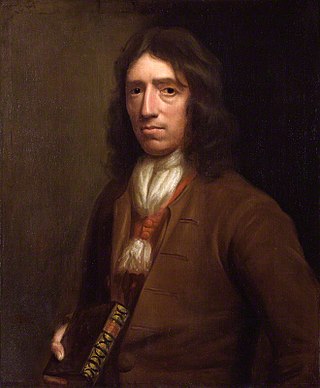Related Research Articles

William Dampier was an English explorer, pirate, privateer, navigator, and naturalist who became the first Englishman to explore parts of what is today Australia, and the first person to circumnavigate the world three times. He has also been described as Australia's first natural historian, as well as one of the most important British explorers of the period between Sir Francis Drake and Captain James Cook ; he "bridged those two eras" with a mix of piratical derring-do of the former and scientific inquiry of the latter. His expeditions were among the first to identify and name a number of plants, animals, foods, and cooking techniques for a European audience, being among the first English writers to use words such as avocado, barbecue, and chopsticks. In describing the preparation of avocados, he was the first European to describe the making of guacamole, named the breadfruit plant, and made frequent documentation of the taste of numerous foods foreign to the European palate at the time, such as flamingo and manatee.
William Wright was an English privateer in French service and later buccaneer who raided Spanish towns in the late 17th century.
This timeline of the history of piracy in the 1680s is a chronological list of key events involving pirates between 1680 and 1689.

Charles Swan was a reluctant buccaneer. Captain Swan was forced into piracy by his crew in the 1680s, and proceeded to write letters to the owners of his ship Cygnet in London, begging them to intercede with James II of England for his pardon—even as he looted his way up and down the coastal areas of South America.
William Knight was a 17th-century English buccaneer and pirate known for joining privateering expeditions against Spanish colonies in Central and South America.

Edward Davis or Davies was an English buccaneer active in the Caribbean during the 1680s and would lead successful raids against Leon and Panama in 1685, the latter considered one of the last major buccaneer raids against a Spanish stronghold. Much of his career was later recorded by writer William Dampier in A New Voyage Round the World (1697).

James Gilliam, or James Kelly was an English pirate and buccaneer active off the coasts of Spanish South and Central America and later in the Indian Ocean. He sailed under several different pirate captains but is best remembered for his brief association with William Kidd.
Captain John Coxon, sometimes referred to as John Coxen, was a late-seventeenth-century buccaneer who terrorized the Spanish Main. Coxon was one of the most famous of the Brethren of the Coast, a loose consortium of pirates and privateers. Coxon lived during the Buccaneering Age of Piracy.
Jan Willems, also known as Janke or Yankey Willems, was a 17th-century Dutch buccaneer. Based out of Petit-Goâve, Willems participated in a number of expeditions against the Spanish during the early to mid-1680s with other well-known privateers including Michiel Andrieszoon, Thomas Paine, Laurens de Graaf, Nicholas van Hoorn and Michel de Grammont.
Josiah Raynor (1665–1743) was a pirate active in the Red Sea. As a pirate he captained the Batchelor’s Delight, which had been on a lengthy South Seas buccaneering voyage before Raynor's tenure.
Thomas White was an English pirate active in the Caribbean and the Indian Ocean. He was only briefly a captain on his own, but served under several more prominent captains such as George Booth, John Bowen, Thomas Howard, John Halsey, and Nathaniel North.
Jacob Evertson was a Dutch buccaneer and pirate active in the Caribbean. He escaped Henry Morgan and sailed with Jan Willems for several years.
Francois Groginet was a French buccaneer and pirate active against the Pacific coast of Spanish Central America.
Jean L’Escuyer was a French pirate active on the Pacific coast of Central America. He sailed and fought alongside a number of prominent buccaneers such as Edward Davis, Francois Grogniet, William Dampier, and others.
David Williams was a Welsh sailor who turned pirate after being abandoned on Madagascar. He was only briefly a captain, and is best known for sailing under a number of more prominent pirate captains.
Francis Townley was an English buccaneer, privateer, and pirate active against the Spanish on the Pacific coast of Central and South America.

John Cook was an English buccaneer, privateer, and pirate.
Jean Tristan was a French corsair (buccaneer) and pirate active in the Caribbean and against Spanish holdings in Central and South America.
John Eaton was an English buccaneer and pirate active off the coasts of Spanish Central and South America. He circumnavigated the world before returning to England.
Duncan Mackintosh was a pirate who cruised the East Indies, the Indian Ocean, and the coast of Africa.
References
- ↑ Gosse, Philip (1924). The Pirates' Who's Who by Philip Gosse. New York: Burt Franklin. Retrieved 23 June 2017.
- ↑ Fox, E. T. (2014). Pirates in Their Own Words. Raleigh NC: Lulu.com. ISBN 9781291943993 . Retrieved 17 June 2017.
- 1 2 3 Downie, Robert (2005). The Way of the Pirate: Who's Who in Davy Jones' Locker . New York: ibooks. ISBN 9781416504160 . Retrieved 11 July 2019.
- 1 2 3 Rogoziński, Jan (1997). The Wordsworth Dictionary of Pirates . New York: Wordsworth Reference. ISBN 9781853263842 . Retrieved 11 July 2019.
- 1 2 Baer, Joel (2005). Pirates of the British Isles . Gloucestershire: Tempus. pp. 66-68. ISBN 9780752423043 . Retrieved 29 July 2019.
- ↑ Dampier, William (1703). A New Voyage Round the World. London: Printed for James Knapton at the Crown in St. Paul Churchyard. Retrieved 19 July 2019.
